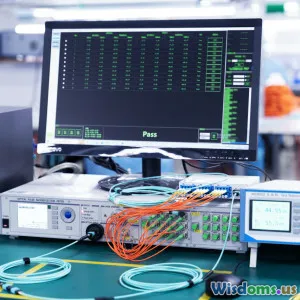
Are Buffer Overflows Still a Threat in Modern Software Architecture
4 min read A comprehensive analysis of buffer overflows in modern software, revealing why they remain critical security threats despite advances in technology. (0 Reviews)
Are Buffer Overflows Still a Threat in Modern Software Architecture?
Introduction
In a world propelled by rapid technological advancements and evolving software paradigms, certain cybersecurity vulnerabilities persist, quietly lurking beneath the surface of modern applications. Among these, buffer overflows stand out as a deceptively persistent threat. Once hailed as a vulnerability of the 1990s, buffer overflows are often mistakenly perceived as obsolete in today’s landscape dominated by managed languages, virtual environments, and sophisticated security frameworks. However, this underestimation can be perilous.
This article unravels the reality behind buffer overflows in modern software architecture. We will explore their ongoing risk, how attackers exploit them today, the influence of new development paradigms, and the mitigation methods that can help engineers safeguard applications effectively.
Understanding Buffer Overflows: A Refresher
Buffer overflow occurs when a program writes more data to a buffer — a contiguous block of memory — than it can hold. This overrun can overwrite adjacent memory, causing erratic behavior, crashes, or creating entry points for arbitrary code execution.
Famous incidents like the 2003 SQL Slammer worm exploited buffer overflow vulnerabilities to devastating effect, causing widespread internet outages. Moreover, vulnerabilities like Heartbleed, though primarily a bounds-checking issue, echo similar memory handling dangers that buffer overflows symbolize.
Buffer overflows typically arise in low-level languages such as C and C++—programming languages that provide manual memory management and allow direct access to memory. These languages remain heavily used in system-level software, embedded systems, and performance-critical applications.
Are Buffer Overflows Still Relevant in Modern Architectures?
The Persistence of Legacy Code and Systems
Despite innovations, a staggering amount of legacy code continues to run critical infrastructure, embedded devices, IoT gadgets, and industrial control systems. Many of these systems are written in C or C++ with minimal patching and little opportunity for architectural overhaul.
Consider the automotive industry: many vehicles rely on embedded systems using traditional software stacks vulnerable to buffer overflows, which can be exploited remotely to compromise vehicle safety.
Low-Level Programming Remains Ubiquitous
Modern software is often segmented into layers. While front-end development leans towards high-level, memory-safe languages (e.g., JavaScript, Python, Java), back-ends—operating systems (Windows, Linux), network services, device drivers—still heavily employ low-level languages. This perpetuates the relevance of buffer overflow risks.
Attacker Techniques Have Evolved
Attackers have refined their exploitation techniques to bypass traditional protections like Data Execution Prevention (DEP) and Address Space Layout Randomization (ASLR). Return-oriented Programming (ROP), for instance, assembles existing system code snippets (
Rate the Post
User Reviews
Popular Posts



















